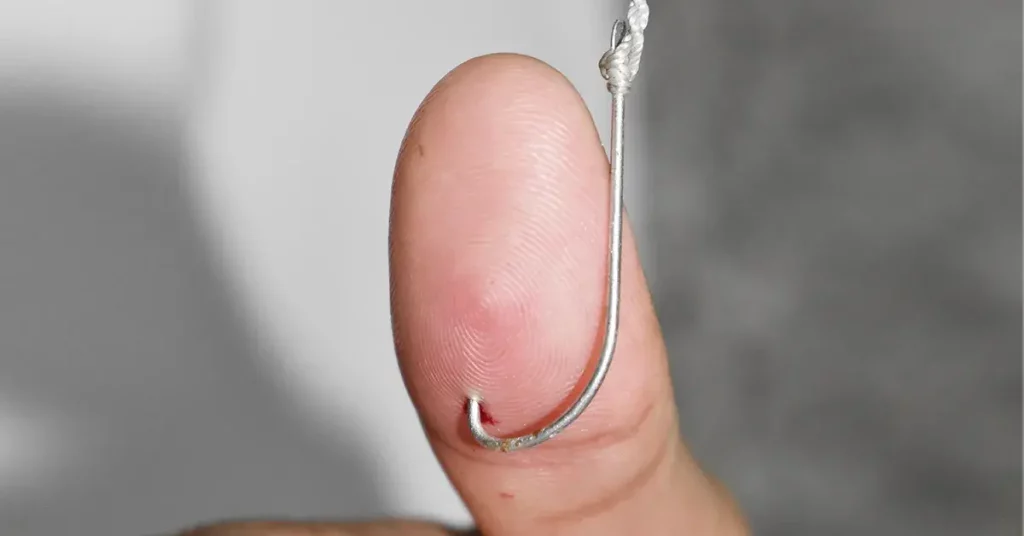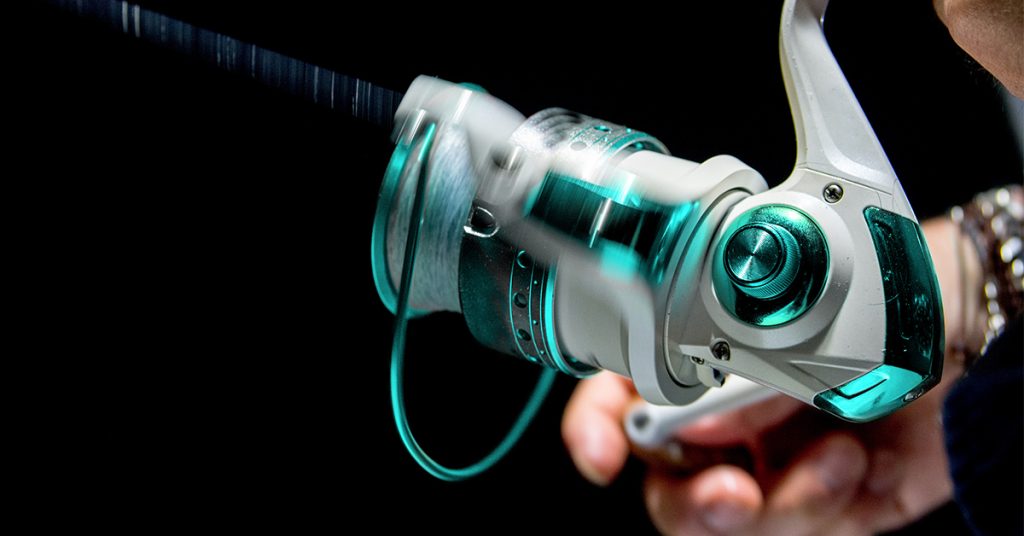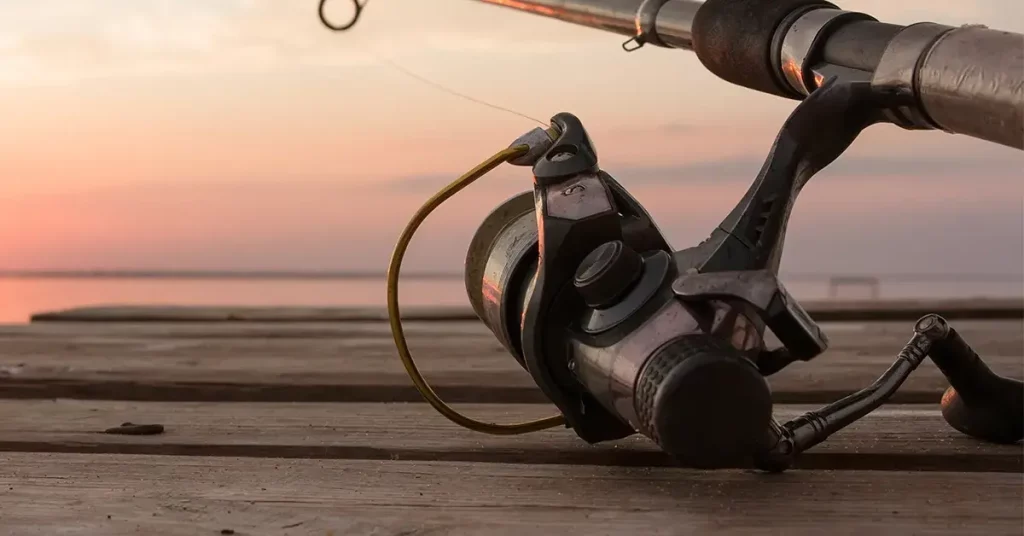Hooking yourself with your own fish hook – if you fish for long enough it’s only a matter of time until it happens to you! So, how do you remove the fish hook from your skin safely? No one likes to think about it, but when you’ve got a treble hook buried deep in your thumb, you’ll be happy you prepared for this exact situation.
You might think this sort of thing only happens to complete idiots – but there are many ways it can happen, even to seasoned anglers.
Consider the following scenarios:
- You’re trying to extract a deeply buried hook from fish and it thrashes around suddenly, resulting in the hook getting buried in your finger.
- You take a few of your buddies fishing for the first time, and one of them accidentally casts his lure into your arm or leg.
- You’re transporting fishing gear from your vehicle to your boat, and you accidentally hook yourself in the finger when you’re not paying attention.
- You’re carefully baiting a hook with live bait, and the boat jolts suddenly from a rogue wave. Now you’ve got a circle hook lodged in your forefinger!
- You’re flyfishing and a sudden gust of wind causes the hook to embed in the back of your neck.
Clearly, getting a fish hook lodged in your skin can happen to any of us. Once it’s in there, you’ll need to know how to remove the fish hook from your skin without causing additional damage. Let’s break down some of the best fish hook removal methods, and when to use them.
Method 1: Push Through
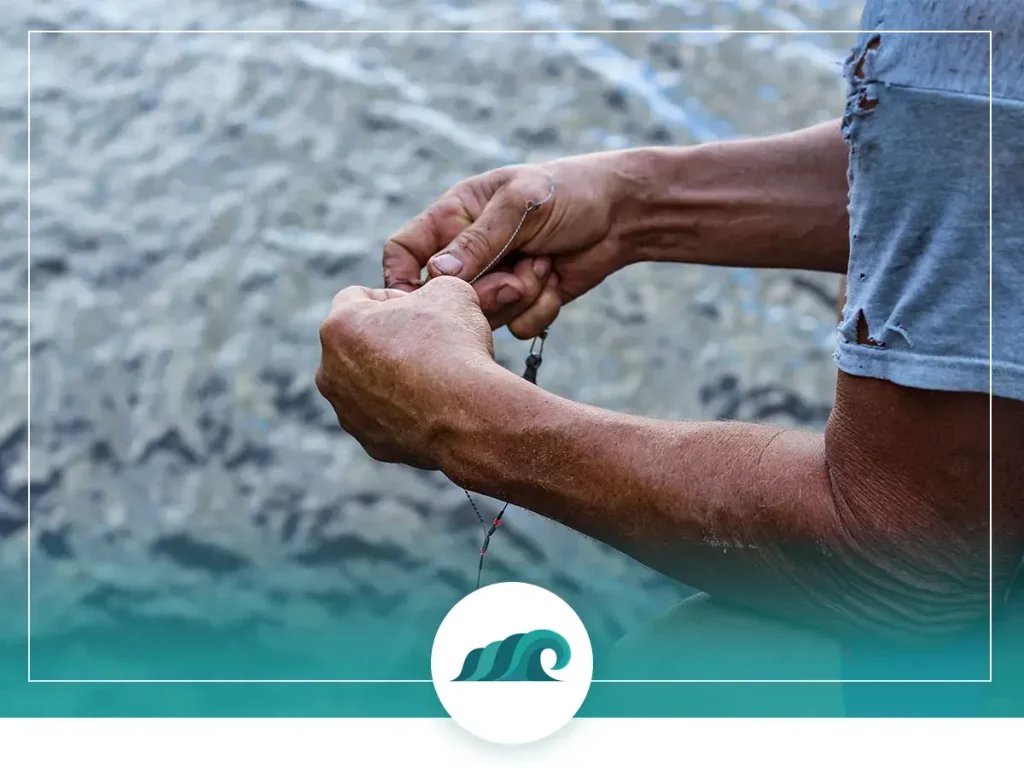
This method is best utilized when a hook has nearly penetrated through to the other end. It works well for hooks with multiple barbs, as well as for small hooks that may be difficult to extract with other methods. It’s intended for hooks that are hooked rather shallow in your skin. Don’t try this if the hook is deeply embedded – seek medical attention.
Rather than trying to remove the fish hook by pulling it out the way it went in, you’ll quickly and firmly push the hook through your skin until the barb emerges outside your skin. Then, use the cutters on a pair of fishing pliers to cut the barbed end off, and push the entire hook back out the way it went in. If the hook is large, and cutting through the hook end is not possible, then use your pliers to flatten out the barb before extracting it.
If the hook has multiple barbs, then you’ll need to push it all the way through the hole, so make sure to cut the hook eye off. While this method does hurt for a second, it’s highly effective at removing the hook from your skin and has a high success rate.
Method 2: String Technique
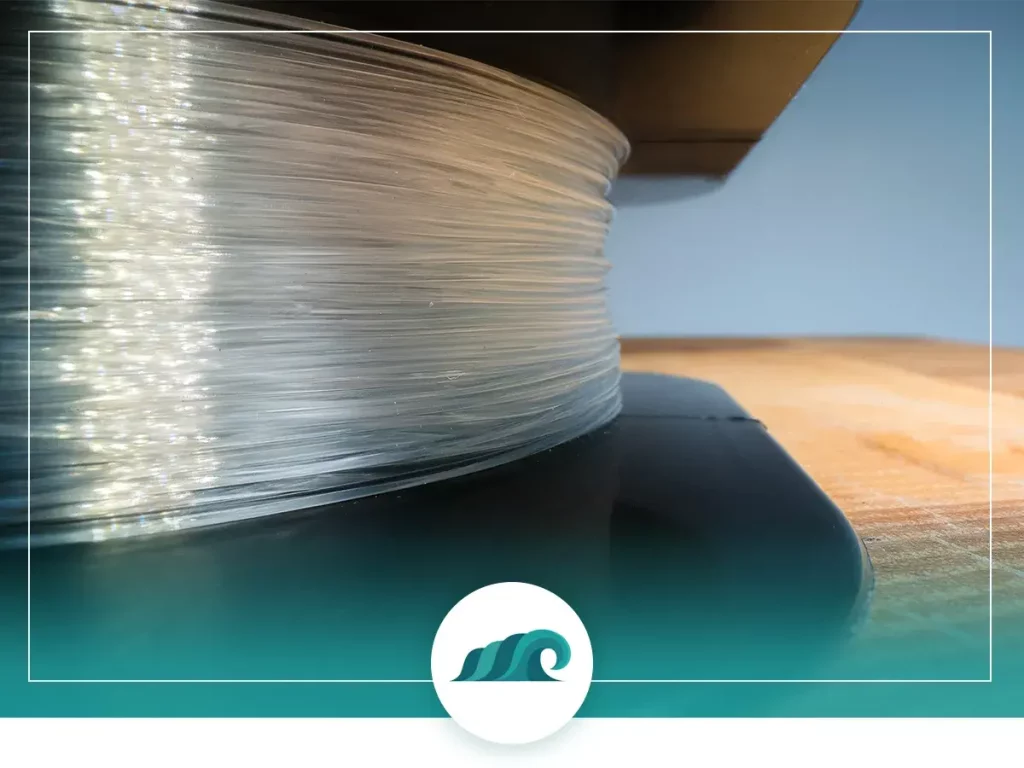
This simple technique requires minimal equipment to pull off and can be done in the field. If done correctly it can be virtually painless, and take mere seconds to execute.
First off, you’ll need to secure a length of strong monofilament or braided line (at least 10 pound test). Then create a 6-inch loop (15 cm) in the line, pass it over the eye of the hook and pull it taught at the top of the bend in the hook.
It’s important to follow this step exactly if you want to avoid pain and further injury to your skin. The loop end must be positioned at the top of the bend in the hook, and the pull must be up and away from the hook not in parallel to the hook eye. If you pull the hook in line with your skin, you’ll only engage the hook and cause further injury.
Have one person apply downward pressure on the hook eye, which will pin it in place and create a separation between the barb and your flesh. Then with a fast, clean motion pull the loop up and away from the hook eye. The hook should come clean out the same way it went in, without any pain or discomfort.
Method 3: Reverse Pull
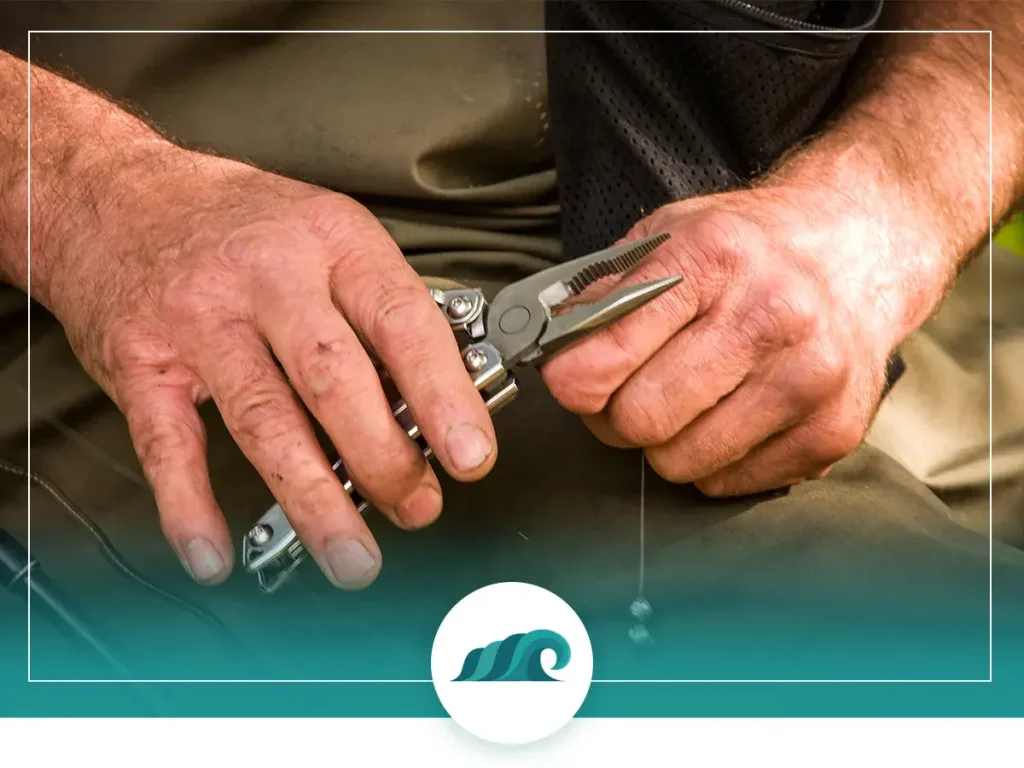
The reverse pull method (also called the reverse pull pliers method), is more of a brute force technique. It can be done solo, as long as you have a decent pair of pliers or forceps handy. To perform the extractions do the following:
Use the pliers or forceps to grip the hook at the top of the bend, similarly to the above method. Apply some downward pressure to the hook to create a bit of separation between the barb and your flesh. Then quickly and firmly rotate your wrist, which should cleanly pull the hook out of your skin.
This method may hurt a little when you pull, but it’s far better than leaving the hook buried inside.
Take a look at this in-depth video for how to perform all three methods (not for the squeamish!)
What to Do After the Hook is Removed?
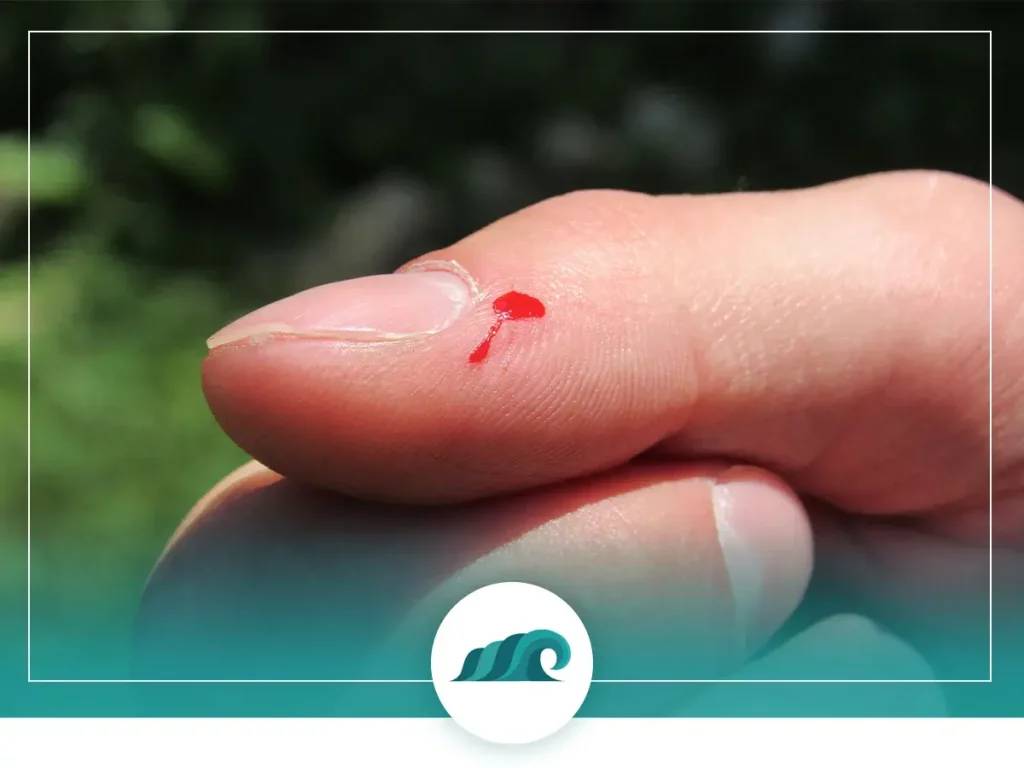
After the fish hook is removed from your skin, make sure to wash the wound in clean water to remove any dirt or debris. Then apply a little antibiotic ointment to ensure it won’t get infected. Applying ice to the area will reduce any swelling and numb the pain.
If the hook is deeply embedded, or it’s in a sensitive area and you can’t remove it yourself, make sure to get proper medical attention.
As with any other wound, it’s important to take of it as quickly as possible. If you leave the hook embedded for a long time, it’s more likely to get infected and will be far more painful when you finally pull it out.
How to Prevent Getting Hooked in the First Place
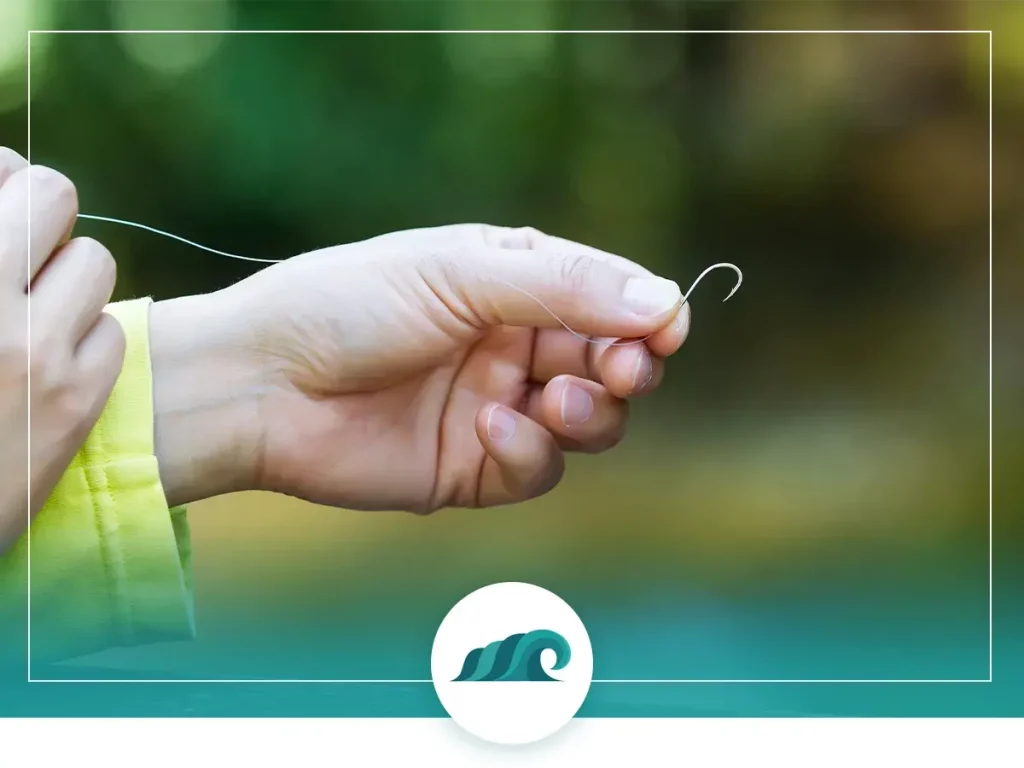
While not all fish hook injuries can be prevented, there are certainly a few things you can do to minimize the chances of skewering yourself like a shish kabob.
Using a fish hook remover or a pair of fishing pliers to extract the hook from a deeply hooked fish will minimize the odds of hooking yourself in the finger. Being aware of your surroundings, especially when you’re fishing around newbies or kids, will result in a better outcome for everyone. Be extra careful if you’re a fly fisherman, as it’s pretty easy to hook yourself from a bad back cast.
If you’re curious about how to remove the fish smell from your hands after fishing, check out my post here.

